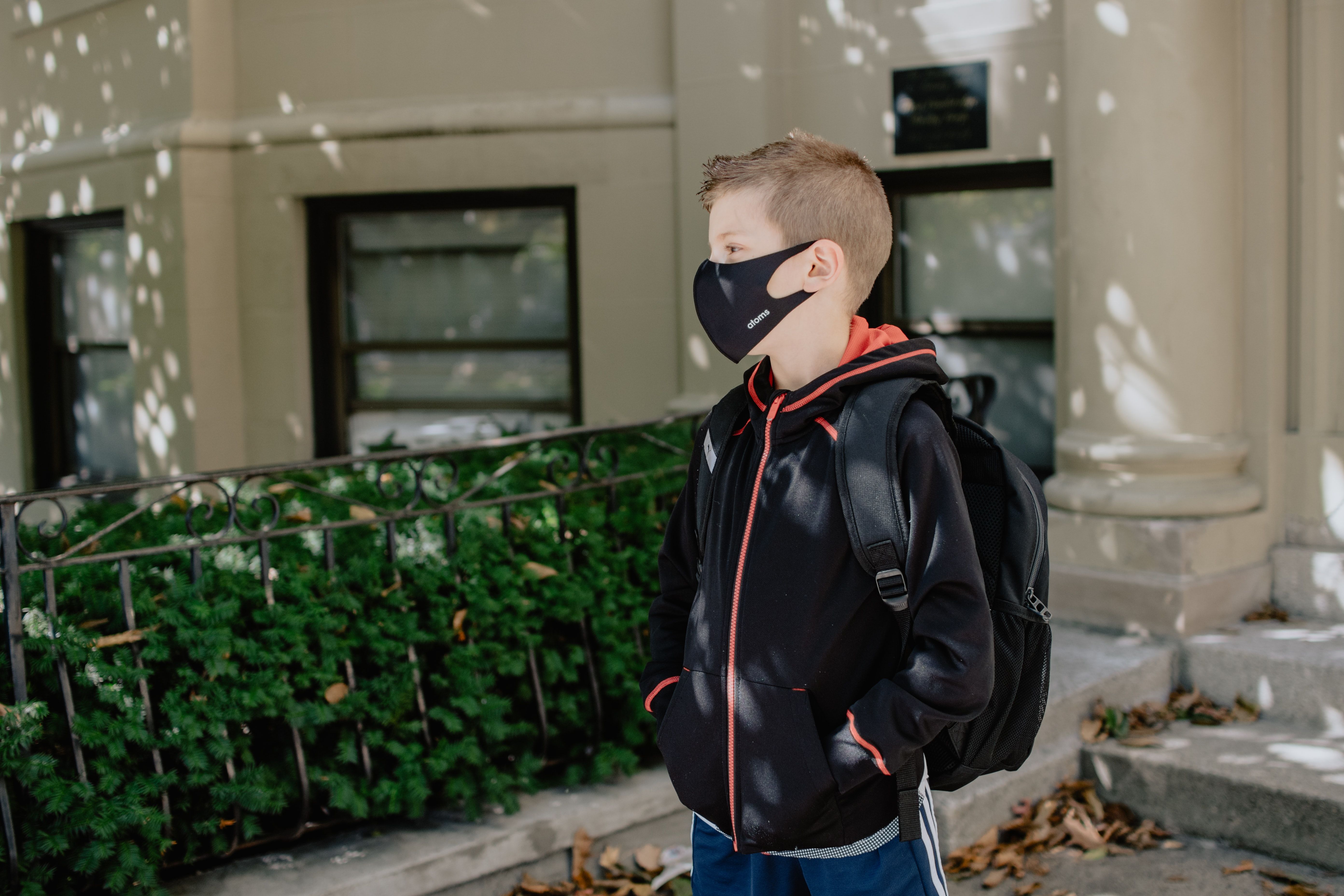Wearing Masks Didn’t Increase Face Touching Among Kids in Simulated School Study
The benefits to children of wearing face masks to prevent COVID-19 outweigh potential infectious risks from face touching, according to a study analyzing hand-to-face contact in a simulated school environment.

The use of face masks in schools during the COVID-19 pandemic has been shown to reduce the spread of disease but also has been controversial. A recent study provided evidence against one possible drawback, showing that children wearing face masks are not more likely to touch their faces than those without face masks.
The Back-to-School COVID-19 Simulation Trial, published in JAMA Pediatrics, included 174 children, aged 5-18 years, at 2 schools in Toronto and evaluated whether wearing a face mask affected hand-to-face contact at a simulated school environment in August 2020.
“In this clinical trial of simulated school attendance, hand-to-face contacts did not differ among students required to wear face masks vs students not required to wear face masks; however, hand-to-mucosa contacts were lower in the face mask group,” the study lead author, Michelle Science, MD, MSc, of the Hospital for Sick Children in Toronto, wrote. “This suggests that mask wearing is unlikely to increase infection risk through self-inoculation.”
The students were divided into 2 groups, with 1 group instructed to bring their own mask and wear it at all times and the other group not required to wear a mask. The investigators evaluated the number of hand-to-face contacts per student per hour on the second day of the 2-day trial.
Investigators monitored the students with 4 cameras in each classroom, assessing 2 60-minute periods—1 in the morning and 1 in the afternoon. A single trained coder assigned to each grade range assessed video footage to record hand contacts with mouth or nose, eyes, glasses, other parts of the face, center of the mask, side or ear loops of the mask along with putting on and taking off the mask.
Investigators found no statistical difference in hand-to-face contacts, with 88.2 contacts per student per hour in the mask group and 88.7 in the control group (rate ration, 1.00; 95% confidence interval, 0.78-1.28; P value = >.99). The study also found:
Hand-to-mucosa contacts were significantly lower in the mask group, with 4.2 contacts per hour compared with 26.8 in the control group (RR, 0.12; 95% CI, 0.07-0.21).
Hand-to-nonmucosa contacts were higher in the mask group, with 84.4 contacts per hour compared with 58.1 in the control group (RR, 1.40; 95% CI, 1.08-1.82).
Hand-to-mask contacts in the mask group were 60.3 per hour.
Masks were removed 102 times in the mask group, for a rate of 0.6 removal per student per hour.
Based on previous studies, the investigators expected to see 30 hand-to-face contacts per hour but were surprised that the rates of hand-to-face touches were nearly 3 times higher.
“This suggests an underestimation in previous studies using less sensitive methods for outcome ascertainment,” the authors wrote.
“These findings have important public health implications,” the authors wrote. “Wearing a face mask did not lead to increased hand-to-face contact, but were associated with reduced hand-to-mucosa contact, which may add protection.”
The authors concluded that the benefits of face masks for infection prevention in children outweigh any potential infectious risks and emphasized the importance of hand hygiene in schools.
Limitations of the study included that coders could not be blind to treatment allocation and the study didn’t include children who require additional resources such as those with medical needs. Some students in the control group wore masks for variable periods of time, but sensitivity analyses removing those who didn’t adhere to their allocation for more than 70% of the time didn’t change the results.
Previous studies have shown that face mask wearing was linked to reduced regional transmission of COVID-19, reduced incidence of COVID-19 in schools and no signs of respiratory distress in children who wear masks.
